Thoughts from a book talk: Gigi Otálvaro-Hormillosa's Erotic Resistance: The Struggle for the Soul of San Francisco
On sex work as an art form, why I love San Francisco in spite of its many flaws, and how it all ties in to the complex relationship between art and mental health
If you believe in the power of creating an online library of resources related to the complex relationship between art and mental health including essays and interviews written from lived experience as well as historic and contemporary research, please subscribe. Only through your support can this work continue. Learn more here.
Re-sharing this one today because Gigi’s book is now out there in the world for anyone who wants to buy and read! Available on Amazon and elsewhere. Remember to recommend it to your local library.

As many of you know, I’ve recently returned to grad school for my second Masters, this time in Visual and Critical Studies. In many ways I’m an autodidact who loves to go on deep learning dives on my own. However, I also really love school, particularly grad school where you’re with a small group of people who are all interested in many of the same things and your main “job” is to read, write and converse about those things. In this program, one of my courses consists primarily of attending amazing talks by a diverse array of different professionals. Recently, that included my favorite talk so far, a talk by an alum of the program, Gigi Otálvaro-Hormillosa, about a book she has coming out next spring called Erotic Resistance: The Struggle for the Soul of San Francisco.
On Loving San Francisco
I knew this would be my favorite talk for a few reasons, not the least of which is that it’s about San Francisco’s history and changes, and I’m in love with San Francisco despite its many flaws. I drove here on a whim all alone when I was 18, immediately fell in love with the city, and moved here with no money (but my best friend in tow) when I was 26. If you can fall in love with a city like you can with a person, San Francisco is my soulmate. And if San Francisco is my soulmate, then it means San Francisco has a soul, something Gigi discusses as is obvious from the title of her book. So, I’ll circle back to this but suffice to say that an academic talk about San Francisco as it relates to visual culture already won me over.
San Francisco is Complex and So Are The People Here
There are a few things that I love a lot about San Francisco through all of its changes, including those changes actually. This is a city of contrasts and tensions and although there’s a lot about that which is problematic, it also creates a richness in the middle that is ripe for creativity.
And something I’ve always really loved here is that the people who live here, the ones whose hearts are truly here, are never just one thing. When I go other places in the country, people ask “so what do you do?” and the answer is expected to basically be one thing (my job) and that’s that. But here, even if people ask what you do, what you end up talking about is maybe or maybe not how they earn money but also their side gig, their art, their weekend activities, their passions. Because in San Francisco, your massage therapist is also a burlesque performer who used to go to Burning Man back when it was still at Ocean Beach and now has a clothing line with a pop up store. And they dated your ex’s roommate who works in tech (because yeah it’s true that almost everyone works in tech) but also takes classes at the Cheese School. You get the point. People in San Francisco are multi-hyphenate (a word I learned from
.)… and that, finally, brings me to Gigi …
Who Is Gigi Otálvaro-Hormillosa?
Because Gigi is a multi-hyphenate creative and scholar working as an educator/ artist-performer/ writer/ psychogeographer. I am nerdy and wordy at heart so I love anyone who can talk intelligently and articulately about almost anything but especially about topics like sex work as an art form. I am brainy and in my head way too much of the time but I’ve worked hard to learn to become embodied so I appreciate someone who pauses in the middle of their book talk to encourage us all to stand up and do a little Qigong. Gigi is from Miami and living/working in the South Bay now and she may have a complicated relationship with San Francisco at the moment but that is all very San Francisco.
Some other more professional things about Gigi Otálvaro-Hormillosa from her bio before we begin:
Her educational background includes a BA from Brown University in “Hybridity and Performance,” the aforementioned MA in VCS, and then a Doctorate of Philosophy with a Minor in Art History from Stanford. Wicked smart.
As described by my classmate Vanessa, Gigi’s “research and pedagogy is rooted in Latinx and women of color feminisms, queer of color critique, eroticism and performance, mindfulness based art practices, and art and activism.”
As an artist, Gigi’s work has been exhibited nationally and internationally. She has also formerly been the director of her own video and performance arts focused organization, (a)eromestiza, and worked with different arts nonprofits.
As a writer, she has appeared in numerous publications and anthologies, including Latin American and Latinx Visual Culture, SF MOMA’s Open Space, Postcolonial and Queer Theories: Intersections and Essays and Pinay Power: Peminist Critical Theory / Theorizing the Filipina American Experience.
Erotic Resistance: The Struggle for the Soul of San Francisco
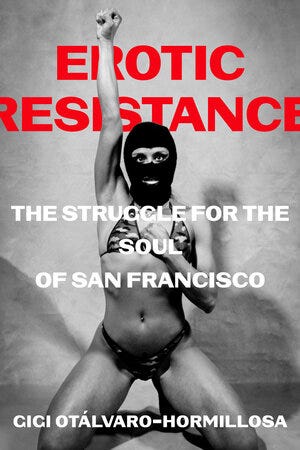
Gigi did her doctoral research and dissertation on “Erotic Resistance: Performance, Art, and Activism, in San Francisco Strip Clubs, 1960s-2010s”, for which she received the first ever Stanford Theater & Performance Studies Department Carl Weber Prize for Integration of Creative Practice and Scholarly Research, among several other accolades related to this work.
Her book, which is due for release in February 2024, evolved out of that dissertation. It explores the complex but often empowered history of San Francisco’s erotic performance culture as it relates to unionization, labor rights and sex workers’ rights as well as the impact on and involvement by communities of queer women, trans women, and women of color.
Here’s the description of the book from the University of California Press:
Erotic Resistance celebrates the erotic performance cultures that have shaped San Francisco. It preserves the memory of the city's bohemian past and its essential role in the development of American adult entertainment by highlighting the contributions of women of color, queer women, and trans women who were instrumental in the city's labor history, as well as its LGBT and sex workers' rights movements. In the 1960s, topless entertainment became legal in the city for the first time in the US, though cross-dressing continued to be criminalized. In the 1990s, stripper-artist-activists led the first successful class action lawsuits and efforts to unionize. Gigi Otálvaro-Hormillosa uses visual and performance analysis, historiography, and ethnographic research, including participant observation as both performer and spectator and interviews with legendary burlesquers and strippers, to share this remarkable story.
And you can read more in depth on Gigi’s website.
My Initial Thoughts Before the Book Talk
I haven’t read the book (obviously, since it’s not out, yet) and I’m not going to delve too deep into the specifics of what she shared in her book talk since it was her first public book talk for just a small group of us. But I want to share what my initial thoughts were upon reading the above descriptions, before hearing her speak:
On Sex Work as Performance Art and Erotic Resistance in San Francisco History
One of the first events I ever attended after moving here was a sex worker’s performance art event at Cafe du Nord. I was thrilled when I first got to see Carol Queen speak, having felt so bold as a seventeen year old buying her book Pomosexuals from the “lesbian bookstore.” I am surprised when I find out people here don’t know there’s a vibrator museum. I’ve read almost every book that exists about the labor history of sex workers here in the 90s. All of these sound aligned with what Gigi will be speaking about.
Gigi’s lens seems specific to female-identified sex workers and I’m curious if she’ll speak at all to the critical role of gay men’s sexuality in the city over the same years. The powerful labor union work female-identified sex workers were doing in the 90s follows right on the heels of the AIDS epidemic. The drag scene here is diverse and rooted in art, arguably much more so than the “beauty pageant” scene that developed in many other cities, and there’s a compelling array of gender identities and expressions in that community. The way that power dynamics of male-identified and female-identified sex workers and artists rub up against one another is fodder for thought. While this may not be part of her lens for this specific work, I find myself curious about the overlaps.

On the changes in San Francisco over time and the idea of the city losing its soul
From what I’ve been able to read about Gigi’s recent work and thoughts about the city, it sounds like she has a lot of concern about where things are at today as a result of the tech culture’s impact here. While absolutely valid and offering great key points, I tend to personally have a different take on it all. Or really more of a “yes, and.”
The simple way I’d phrase it is that “San Francisco is always changing,” but it’s the way that people here creatively take on that change at all times, rooted in the history here, that I think makes it keep coming back to a similar heart center over and over through the decades. So while there’s clear issues arising from the tech focus, there’s also an element of tech that plays into eroticism as both business and art that I think can be really fascinating - the visual and verbal culture of how sex workers here began utilizing sites like Craigslist and Back Page, the development of queer/feminist porn filmmaking centers here aided by accessibility to tech, the use of Twitch during the pandemic to stage distanced performances.
And speaking of the pandemic, that’s a part of the story that I think I experienced very different from Gigi. From the description on her psychogeography video (San Francisco Feelings 2022), it seems that she began filming several years before the pandemic and finished upon return last year, but perhaps was not here in the city for any of the pandemic itself. So she has a specific perspective of the before and after. While there was a lot that was awful about the pandemic, including the loss of many creative spaces, I saw so much art creativity thrive here during that time, alongside activism related to #MeToo and #BlackLivesMatter.
Drag Queens serving distanced Meals on Heels and doing performances literally in the street, the Paint the Void art project supporting some artists financially while other artists paralleled that work with their own street art, even the unique design of individual parklets popping up all over. The sex scene here, both with regard to art and outside of that, was also interesting as people tried to figure out how to satisfy the need for physical closeness while also honoring the need for physical distance. I believe there was a burlesque show in the windows of the old Red Vic on Haight, as one art example. And I know several men who engaged in masked mutual masturbation in the park, harkening back to the late twentieth century days of cruising here but connecting first via Grindr or Scruff instead of on the street itself. So, I’m curious to see what Gigi will have to say and to see what does and doesn’t resonate with my own experience of the city at this time.
Adding Some Thoughts After the Book Talk
In terms of the above, there was someone in the audience who asked a variation on the question about the tech and I really appreciated Gigi’s response. She had already said earlier on that the city is in flux and we really don’t know where it’s going, it’s open. And she answered further to say that she’s not saying that it is or isn’t going to be a certain way in the future but rather than her book is honoring the past at a very specific place in time, a place and time that is really inarguably very different from where we are now. That I can both understand and get behind.
And although I’m really interested in the history of how Gigi’s research rubs up against gay male culture in this city, upon thinking about it more, I appreciate her focus on a specific female-identified/ queer lens. Because this city has long been associated with gay male culture and that’s not the only story. In her talk, Gigi said something about talking about the “Other Tales of The City,” and it made me laugh out loud. Because I love Maupin’s stories … and yes, there are so many other tales.

And really, despite my soulmate protective love for this city, I do see the arguments for the concerns about the soul of the city. There’s a reason a lot of people say this same thing. I lamented the closing of the Center for Sex and Culture a few years ago. I’ve followed the changing story of The Stud, fighting to stay open and continue offering a space for unique queer performance art. Although some of the parklet designs during the pandemic were innovative and creative, they were still commercial parklets with a lot of people who often looked very similar drinking their mimosas together.
For me, there’s always very much an “okay, but what’s next?” perspective. I heard someone say once years ago that everyone in San Francisco thinks that San Francisco was best the year that they moved here and has gone downhill since. So if you were obsessed with the Beats maybe you hated the hippies … the 70s, the 80s, the 90’s …. each part of San Francisco and each in different neighborhood has changed and changed. Maybe for you the Haight is the beauty of the summer of love, the mess of addiction after and again with heroin in the 90s, the “wth are chain stores doing on Haight?” in the early aughts … It goes on. That isn’t to say that I myself will like/love/believe in whatever is coming next. It’s to say that I have curiosity about it.

Mental Health and Creativity … Thoughts After Hearing From Gigi
Obviously, my specific lens is the complex relationship between art and mental health - how creativity is therapeutic but also the shadow side of how mental health challenges can impact creativity. And also the complex layers of how the business of art, who gets included and excluded in art, how humans are represented in art all play into that. I don’t have a lot of answers yet but here are a few things I’m thinking about further in response to Gigi’s talk:
She introduced us to the history of one of the first transgender female stripper / erotic performance artists in the city and among all kinds of interesting things mentioned that the performer said she was out there doing that work so that other people with gender identity questions would know that they didn’t have to die by suicide. I'm thinking about the power of putting your own specific identity on display as art can help others through destigmatization, validation, mirroring, etc.
In her work, Gigi is an academic, an author, an artist and a participant-observer, and I’m curious about how all of those roles interconnect in us multi-hyphenate people. She answered this a bit from her own experience and it’s something I’m continuing to think about. We all have roles - work roles and identity roles and life roles - and our creativity and our mental health are both connected to when/if/how those roles are expressed or hidden, supported or rejected, etc.
Gigi also specifically mentioned the challenge of doing participant-observer research as part of a dissertation just in terms of the logistics of a PhD program already being so time-consuming and brain-sapping (my words) let alone doing the active immersion in the creative parts of the research plus living the rest of life. I think there’s more for me to chew on her specific to researching creativity and mental health in higher academia. I’ll probably start with some journaling about my own lived experience of this and go from there.
More generally, I find myself thinking about what it means to consider stripping and other sex work as a form of performance art. There are so many layers to the creative performance of it - the design of a persona, the clothing, the music choices. The most recent related book I read about this was “Dancing Queen: The Lusty Adventures of Lisa Crystal Carver” and it was over a year ago but I remember specific scenes about the art of the performance and also the activism around it. There’s also a lot of mental health stuff tied up in this work, unique to each person of course, and so it’s interesting to consider how those two things play out in this specific arena.
Much food for thought.
Here are some of Gigi’s links if you want to dive deeper.
You Might Also Like to Read:
Housekeeping:
Create Me Free exists because of paid subscriptions. Read what that means here.
On a really tight budget? Learn about my Pay What You Can option here.





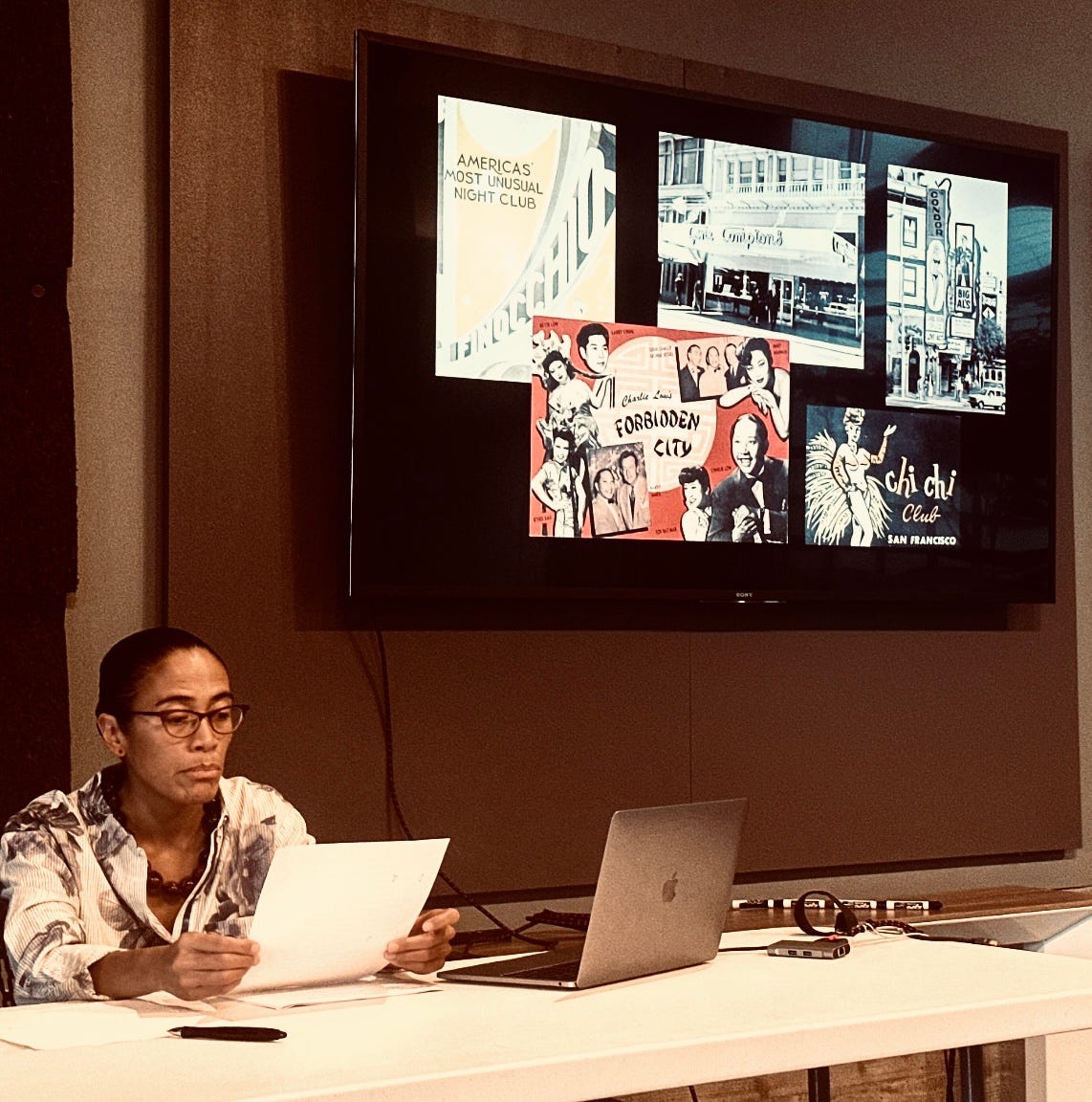
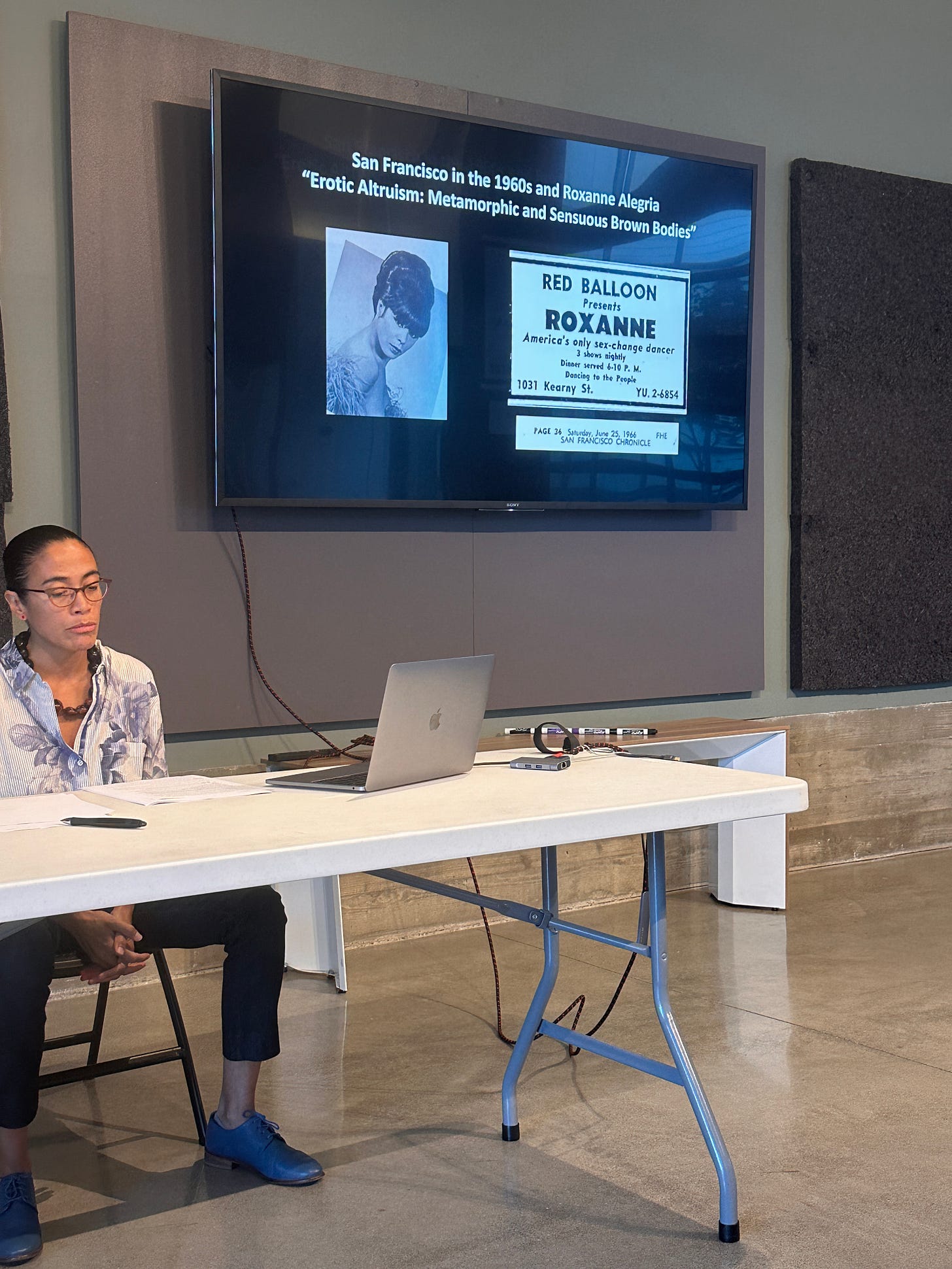

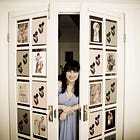
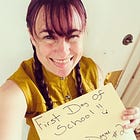
I love how your love for San Francisco and its eclecticism and exploration and openness come through in this piece.
It relates only in love for the city, but have you seen Elliot Kirschner’s recent “ Standing up for San Francisco”?
https://open.substack.com/pub/elliotkirschner/p/standing-up-for-san-francisco
great stuff. Even in 2024 it seems like the world is almost victorian era mixed with capitalism eros.
I attempted a graphic novel on eros in modern digital times
https://www.amazon.com/dp/B0CPMQ177H
Keep up the good work. There needs to be alot more investigation into human sexuality on an individual basis, rather than political movements to collectivise everyone.